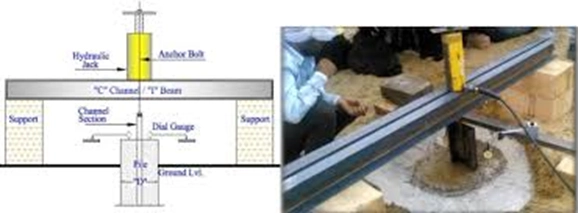Static Pullout Pile Load Test

STATIC PULLOUT PILE LOAD TEST AS PER IS 2911 PART-4 2013
A pull-out test on a pile assesses its resistance to uplift (vertical upward) forces. It’s used to determine the pile’s tension capacity and the bond strength between the pile and the surrounding soil. This test is crucial for verifying the design assumptions and ensuring the structural safety of the foundation.
Here’s a more detailed explanation:
Purpose:
- Determine Tension Capacity: The primary goal is to measure how much upward force the pile can withstand before failing or reaching a specified displacement.
- Assess Bond Strength: The test evaluates the adhesion between the pile's surface and the soil, ensuring that the load is transferred effectively.
- Validate Design Assumptions: By applying a pull-out force and measuring the pile's response, engineers can confirm the design assumptions made for the foundation.
How it's done:
- Applying Uplift Force: A hydraulic jack or other mechanism is used to apply a controlled upward force to the top of the pile.
- Measuring Displacement: Dial gauges or other displacement measurement devices track the movement of the pile as the load is increased.
- Recording Data: The load applied and the corresponding displacement are carefully recorded.
- Determining Safe Load: The safe load for the pile is determined by comparing the load-displacement curve with predefined criteria. These criteria typically involve a percentage of the load at which the displacement reaches a certain value or a point where the curve shows a significant change in slope.
Considerations:
- The uplift resistance primarily comes from skin friction between the pile and the soil.
- The test may be conducted as an initial test to establish the pile's capacity or as a routine test to verify its performance.
- The test can also be used to assess the effects of lateral loading on the pull-out resistance.

